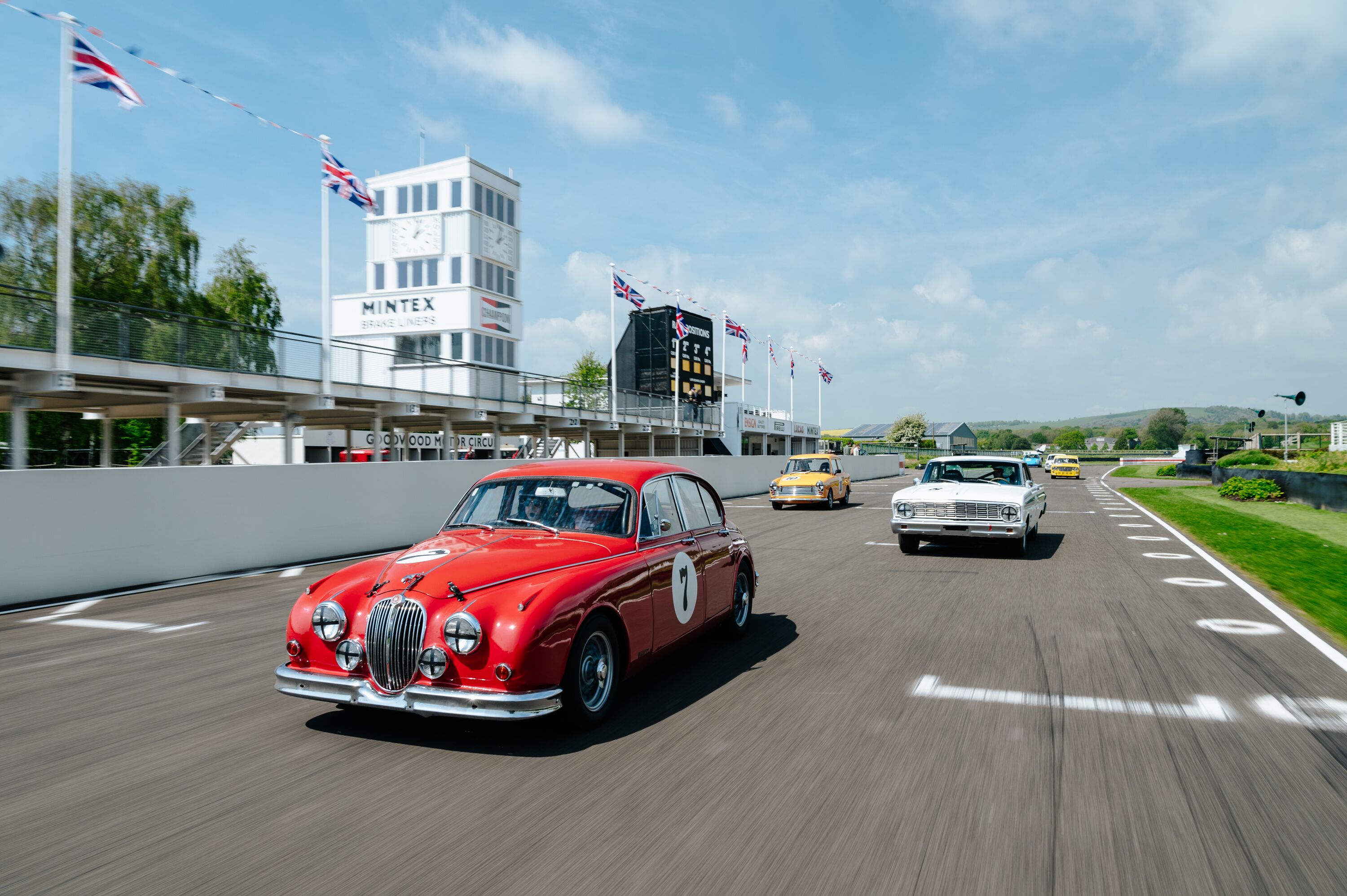The Porsches of the Central Feature at the 2023 Festival of Speed
Visitors to the Festival of Speed presented by Mastercard cannot fail to notice that Porsche has reached a certain milestone in 2023. The marque’s 75th anniversary celebrations are writ large across the Festival site, not least in front of Goodwood House where the Central Feature celebrates both road and racing cars from the last seven and a half decades. Porsche is the only marque to have had that honour four times, the most recent being five years ago. Here’s a run-down of the six cars that are hanging from the Gerry Judah-designed sculpture. The half dozen is split down the middle between road and racing cars, so let’s start with the competition machinery.

Porsche 962
The Blaupunkt liveried 962 is one of 91 built between 1984 and 1991, its long life helping it go down in history as the most successful ever endurance racer. It chalked up three consecutive IMSA GT Championships from 1985 to 1988 inclusive and claimed third overall in 1988 Le Mans 24 Hours.
The turbocharged flat-six engine gives the 962 a direct commonality with Porsche’s production line sportscars, most of which share the same cylinder count and layout. Of all the 962s produced, 16 were factory cars, the rest sold to privateers who continued to run them further into the 1990s. Some were even converted for road use, making for some of the most extreme supercars ever to wear number plates.

Porsche 963
What a difference adding just one makes. We jump from the mid-1980s to the present day with the 963, fresh from its appearance in the Le Mans 24 Hours just last month and resplendent in its 75th anniversary celebration livery. Like its above-mentioned forebear, the 963 made its competition debut at Daytona. However, it had been seen in public prior to that, having made a surprise debut at the 2022 Festival of Speed. At Daytona, the 963 was hampered by reliability issues (battery and gearbox problems), which meant it would have to wait until Long Beach for its first outright win. At Le Mans, the highest placed 963, driven by Dane Cameron, Michael Christensen and Frederic Makowiecki, came home in ninth place.

Porsche 718/2
The Porsche 718 is best known in its two-seater sportscar form, built from 1957 to 1962, but in 1959 the 718/2 took the mechanical package from its full-bodied sibling and clothed it in a single-seater chassis. Carried over were the flat-four engine, torsion bar front suspension and coil-over rear. It made its debut at that year’s Monaco Grand Prix where Wolfgang von Trips qualified in 12th place. He failed to qualify in the race after crashing out. Joakim Bonnier put the car on the podium at Reims later that year with a third-place finish. In 1960, the bodywork was revised and a six-speed gearbox was added. A year later, the FIA changed the Formula One regulations meaning the car was eligible to compete in standard form. Porsche came third overall in the manufacturer standings in 1961, competing also with the 787 in all eight rounds.

Porsche 911 Carrera (992)
Arguably the most relatable car in the sky is the 992 Carrera. Eye-catching Martini livery aside, this is current generation 911 in its pure form and exactly the kind of car you could go into a showroom and buy right now. And you’d be rewarded with one of best all-round driving and ownership experiences available on the current market. It’s Porsche at its quotidian best.

Porsche 911 Sport Classic (997.2)
First revealed at the Frankfurt Motor Show in 2009, the 911 Sport Classic evokes the style of the Carerra RS 2.7 of 1973. To that end, it has Fuchs alloy wheels (19-inch), a ducktail spoiler and an oh-so-subtle double-bubble roof. Beneath the retro styling it was 997.2 business as usual, based on the contemporary Carerra S with the wide body. That means 408PS (300kW) from the flat-six engine and a six-speed gearbox. The Sport Classic also came with carbon-ceramic brakes as standard. Only 250 were built, and they all sold out within 48 hours of the car being revealed.

Porsche 365
Finally, we come to the oldest car suspended from the steel structure. The 356 is the machine that set the template for the rear-engined two-box coupés that Porsche continues to build today. The enduring appeal of the 2+2 sportscars, which combines performance with everyday usability, is testament to the inherent rightness of the original design – even if engineers have had to work hard to get around the characteristics of the layout’s weight distribution. Production ran from 1948 to 1965, continuing for a year after the replacement 911 entered production. Porsche built a total of 76,000, the first fifty or so constructed in Gmünd, Austria, before the move to Zuffenhausen, Germany, and around half of them survive today.
The 2023 Goodwood Festival of Speed is underway! You can watch every moment of the action by watching our live stream.
Photography by Jonathan Wilson, Nick Wilkinson, Jordan Butters and Joe Harding.
FOS
Festival of Speed
Central Feature
Porsche

Festival of Speed
Gallery: Central Feature celebrates 70 years of Aston at Goodwood

Festival of Speed
2023 Festival of Speed Central Feature to celebrate Porsche

Festival of Speed
Gallery: 2022 Festival of Speed Central Feature revealed


